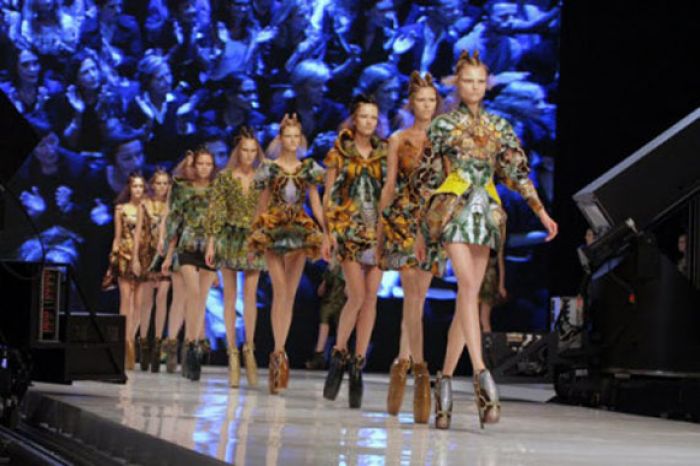
“I was dubious about the technology thing at first but it’s become the complete norm now,” declared British designer Roksanda Ilincic to Vogue UK, following the news that PR powerhouse KCD is to launch complete digital coverage of shows, debuting later this week at New York Fashion Week.
“I think digital fashion shows will definitely be a success,” she continued, “but on the other hand, it will be very different from when people actually see and feel the clothes at a show.”
For decades, the catwalk has been the fundamental place for designers to reach retail buyers, magazine editors and flaunt relationships with influential stylists and celebrities. Digital technology has more recently extended the reach of the runway to consumers and bloggers, whilst the Internet alone has facilitated rapid sharing of complete collections by both brands and the media.
That said, the most innovative digital catwalk projects have so far focused sharply on consumers. Burberry has led the pack with Runway to Reality (for VIP clients to shop the runway) and last season’s Tweetwalk (for the aspirational advocates on Twitter).
Dolce & Gabanna, Louis Vuitton, Viktor & Rolf and Gucci have all called upon live-stream technology to share their runways with the world, but aside from the selective but brilliant video coverage from Style.com, detail, craftsmanship, inspiration, beauty and construction are often issues left immediately overlooked.
This is all set to change should the fashion set embrace KCD’s Digital Fashion Shows platform, which co-president Ed Filipowski claims will provide “all the information and materials needed to review, cover and potentially buy the collection, just like a physical show.” Uncharacteristically democratic, the KCD model extends a front-row invitation to all invitation-only guests and behind the scenes access to match.
Designers pay $150,000 to $300,000 – the approximate cost of a small-to-medium-size show – to share their collection with its password protected guests, who can view the show on computer, tablet or mobile. Designers are required to display looks head-to-foot and provide detail shots, information on the clothes and beauty notes for the use of editors and buyers (WSJ).
The concept has already been celebrated by designer Paul Smith, who believes that the “idea allows a brand to say exactly what it wants to about its collection” and describe collections in all the details the brand feels necessary.
“Suzy Menkes might simply describe a ‘leather jacket’, while we can say what exactly it’s made of, and why it’s the most beautiful item in the world. I’ve struggled in the past with journalists getting it wrong – calling my prints ’computer-generated” when they were actually hand-painted fabrics, for example. So it would make quite a difference to be able to say it ourselves," he told Vogue UK.

Editors such as Vanessa Friedman (Financial Times) and Alexandra Schuman (Vogue UK) have also acknowledged its conceptual relevance, citing “economic pressures on magazines, newspapers and retailers” and the need to cover “a huge amount of collections” as key reasons KCD’s platform could become an industry staple.
Designers and editors alike have mused on the benefits the platform could have on the quality of coverage as well as product, particularly when it comes to autumn and spring pre-collections. Roksanda Ilincic explained it could curb the need for her brand to travel to New York to sell the pre-collection, a process that often delays work on the mainline.
Vanessa Friedman explained that digital coverage could put two pre-collections that currently run sporadically for two months “all in one place, to be viewed and reviewed as a whole in a way that has been impossible thus far.” But she then went on to wonder what this could all mean for the role of the critic, begging the question: “if editorial outlets can get all this information for free, why have a middleman?”
Paul Smith concurred, suggesting that the platform “begins to negate the need for the press. These days we can reach huge audiences via our own social media,” he continued. “A brand need only put someone famous in its clothes and eight million people on Facebook can know about it immediately.”
It is doubtful the platform will change the structure of the fashion media in its formative years. Brands may relish the ability to tell their own story in great detail, but it is difficult to think any technology could rapidly replace the current system of press coverage based largely on attendance.
But in an increasingly digital media arena, the system certainly has the potential to enhance the richness – and accuracy – of content and ensure truly global coverage, unrestricted by the costs associated with fashion week travel. For young designers attempting to reach a large audience on a relatively small dime, it makes nothing but sense.
“There is an entire generation of people whose eyes are trained digitally – it’s how they view fashion,” explains Ed Filipowski. “We need to look at our industry and ask how we can cater to that, as well as maintaining the integrity and credibility of fashion while making our lives easier. This way, we can hopefully offer a creative way of offering a front row experience to more than just the usual elite few. This way everyone gets the fashion knowledge.”









